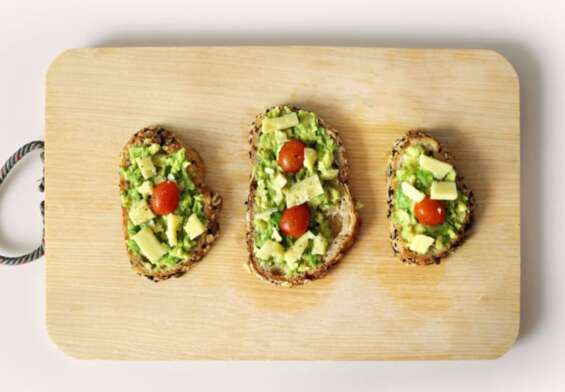
Sustainable Health: Integrating Shakes Into Long-Term Diets
Imagine you’re navigating the hustle of everyday life, balancing work, family, and personal time. Amidst this chaos, prioritizing your health often takes a backseat.
You know the importance of a nutritious diet, but time is scarce. This is where shakes come in—a simple yet effective solution to this modern dilemma. Think about this: a blend of health and convenience in every sip, tailored to fit into your hectic schedule.
So, you might be wondering how shakes can seamlessly integrate into your life without disrupting your routine. It’s not just about quick fixes or trendy diets—it’s about sustaining your health in the long run.
Let’s dive into how you can make shakes a sustainable part of your everyday diet, enhancing your health journey with every delicious gulp.
The Role Of Shakes In A Balanced Diet
Shakes aren’t just a fad but a tool to enhance your dietary habits. When you’re rushing in the morning or need a quick meal replacement, shakes can be a lifesaver. They can be packed with nutrients, vitamins, and minerals.
However, it’s crucial to choose the right kind of shake. Low carb shakes, for instance, can be an excellent option for those watching their carbohydrate intake. They provide the necessary energy without the excess carbs that can lead to weight gain.
Selecting The Right Ingredients For Your Shakes

Selecting the right ingredients is crucial for creating healthy, nutritious shakes. Here’s how you can make the best choices:
- Choose High-Quality Proteins: Add a protein source to keep you full and support muscle health. Consider plant-based options like pea or hemp and animal-based proteins like whey or casein, depending on your dietary preferences.
- Include Healthy Fats: Don’t shy away from fats; they’re essential for nutrient absorption. Avocado, chia seeds, or a tablespoon of nut butter can provide healthy omega-3 fatty acids and increase satiety.
- Pick Complex Carbohydrates: For sustained energy, include complex carbs like oats or quinoa. They add texture and fiber, keeping you fuller for longer.
- Choose Fresh Fruits And Vegetables: Fresh produce is packed with vitamins, minerals, and antioxidants. For instance, berries offer antioxidants, while leafy greens like spinach provide iron and fiber.
- Limit Added Sugars: Keep your shake’s sugar content in check. Use natural sweeteners like a small amount of honey or ripe bananas instead of processed sugars or syrups.
- Be Mindful Of Liquid Bases: The base of your shake affects its calorie content and nutritional profile. Options like water, unsweetened almond milk, or coconut water are low in calories but high in hydration.
Variety is key. Rotate your ingredients to ensure a wide range of nutrients and to keep your taste buds excited. Keep these points in mind, and you’ll craft shakes that are not only delicious but also aligned with your health goals.
Incorporating Shakes Into Daily Meals
Incorporating shakes into your daily meal plan can streamline your nutrition intake without overwhelming your schedule. Here’s how to do it effectively:
- Choose A Specific Meal To Replace: Decide whether breakfast, lunch, or dinner suits you best for a shake replacement. Mornings can be ideal as shakes are quick to prepare and easy to consume on the go.
- Balance With Snacks: If you replace a main meal with a shake, consider having healthy snacks like nuts or fruit throughout the day. This helps maintain energy levels and prevents overeating during your next meal.
- Vary Your Ingredients: Keep your diet interesting and nutritionally diverse by rotating the ingredients in your shakes. This way, you’re not just enjoying different flavors but also getting a range of nutrients.
- Post-Workout Replenishment: After exercise, a protein-rich shake can aid recovery. Include protein powder, a banana, and a bit of almond milk. It helps in muscle repair and replenishment of energy stores.
- Evening Treat: End your day with a shake that feels like a treat. Blend cocoa powder, a banana, and peanut butter with milk. It’s a satisfying way to end your day without indulging in high-calorie desserts.
While shakes are convenient, they shouldn’t replace all your meals. It’s important to maintain a balanced diet that includes whole foods for optimal health.
Balancing Shakes With Whole Foods

Balancing shakes with whole foods is crucial for a well-rounded diet. Here’s how you can maintain this balance:
- Prioritize Variety: Include a wide range of whole foods like fruits, vegetables, lean proteins, and whole grains. This ensures you’re getting a complete spectrum of nutrients.
- Understand Portion Sizes: Learn the appropriate serving sizes for different food groups. This knowledge helps you create balanced meals and prevents over-reliance on shakes.
- Listen To Your Body: Pay attention to hunger cues and fullness signals. Whole foods, with their fiber and complex structures, can offer a sense of fullness that liquid meals might not provide.
- Pair Wisely: When you do consume shakes, pair them with a small, solid snack like nuts or whole grain crackers. This pairing can help stabilize blood sugar levels and extend satiety.
- Schedule Smart: Plan your meals and snacks, including shakes, at regular intervals. This helps maintain your metabolism and ensures a steady supply of energy throughout the day.
- Consult A Nutritionist: If you’re unsure about how to balance shakes with whole foods, consider seeking advice from a nutritionist. They can help tailor a diet plan that suits your individual health needs and goals.
The key to a sustainable and healthy diet is variety and balance. By combining shakes with a diverse range of whole foods, you’re on your way to achieving a well-rounded nutritional intake.
Monitoring Your Progress And Adjusting Accordingly
If weight management is your goal, routinely weigh yourself and note any changes. Observe how you feel after consuming shakes. Do they satisfy your hunger? Are you experiencing increased energy levels or unforeseen side effects?
Based on these observations, you may need to tweak your shake recipes. You can add more protein to keep you fuller longer, or you can adjust the portion size to better align with your caloric needs.
Your body’s feedback is crucial. It guides the necessary adjustments, ensuring that your shake regimen complements your dietary goals effectively. Stay attentive and be ready to make changes for optimal results.
Final Thoughts
Incorporating shakes into your long-term diet can be a game-changer for your health journey. They’re a versatile, nutritious, and convenient option for those juggling a busy lifestyle.
By choosing the right ingredients and balancing them with whole foods, you can enjoy the benefits of shakes without compromising your nutritional needs. Remember, it’s all about finding that sweet spot where convenience meets nutrition.










